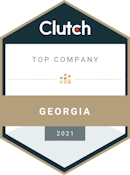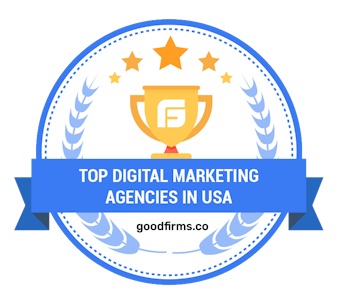Author: Heidi Schmidt, Digital Marketing Specialist
In part 1 of this series, Competitive Intelligence Factors & Importance, we addressed some of the elements that Google considers when ranking pages and why website optimizers should pay attention to these factors. Let’s dive into tactical application – who are the competitors you should review, how do you review them, and what do you do with your data?
Gathering Competitive Intelligence
There are more than 50 on-page components, some with sub-components, that I examine on competitor sites when assembling competitive intelligence. There are a handful of additional off-site elements to evaluate as well. These ingredients make the meal that is Google’s food. I recommend analyzing competitor pages regularly – quarterly or bi-annually depending on your market.
The process begins with identifying which competitors are ranking above you or near you for the target search term. Depending on your industry and market size, you may decide to review the 10 top-ranking competitor sites or perhaps as few as the top 3 competitors. In most cases, you’ll want to skip ranking sites that are not direct competitors. For example, if you are a local service provider and many of the sites ranking near the top are lists and resources for finding businesses, those aren’t good candidates for content comparisons. You may also want to skip blogs that are ranking above actual service/product pages, depending on the depth of the blog and what else you have to work with. Be sure to use an SEO tool to determine rankings rather than your own search results, because your location may obscure the proximity value of the query.
Once you have selected your competition for the review, you’ll want to read through their content, assess all relevant aspects of the page, and compare it to your own page. Be sure to look carefully at elements such as meta data, alt tags, and schema markup. Assess E-E-A-T signals and the helpfulness of the copy from a customer perspective. When judging depth, frequency, and usage of elements such as keywords, headings, and links, quantify the findings so you can calculate an average and maximum value, which will come in handy when deciding how to use your competitive intelligence.
Using Competitive Intelligence
Now you have a lot of insight into your competitive landscape for an individual page that you want to rank in search results. But what do you do with this insight and data? Begin optimizing your page to reflect what Google clearly wants to see. After reading through your competitors’ pages, you have an understanding of what Google is considering “helpful to the user”, so try and mirror that on your page. Do your competitors have a FAQ section? Are they utilizing structured data with target terms? Do their pages have testimonials and proof of experience? Is the interface user friendly on desktop and mobile?
Be careful to not over optimize. Earlier, you quantified some of your findings to calculate the average and maximum. First, optimize your page to meet the average on those factors. For non-quantifiable factors, implement the optimization if half or more of your evaluated competitors have it. Wait for Google to recrawl the page and see if your new quality signals were recognized. If optimizing to the competitive average did not do the trick, it is likely safe to say you can optimize to the competitive max without overdoing it. This step is important because over optimization can hurt your rankings just like under optimization. Tread lightly and pay attention to how Google reacts to your changes.
Competitive Confusion: How Are They Ranking & I’m Not?
Something I asked myself from time to time when I first started optimizing websites, and something my clients occasionally ask, is why the page I’m optimizing isn’t ranking even though it is clearly better, from top to bottom, compared to the competition that’s ranking. This is a valid question. The answer is, “it depends”. This happens periodically, and there are many factors that could contribute: algorithm updates & rollout timelines, domain authority & age, and user experience, to name a few.
Algorithm updates & Rollout Timeline
When Google rolls out a new update, it doesn’t impact the entire world all at once in seconds. We’re not that advanced yet. It usually takes weeks to conclude an algorithm update and Google implements these frequently throughout the year. For example, in 2023 they made 9 algorithm changes and 4 core updates, most of which took 13-16 days to complete. Here is a summary and timeline of these rollouts. So, what’s happening to search results during those weeks? Everything is a mess and the search results often don’t make the sense they should. Unoptimized sites are ranking above optimized sites, completely irrelevant pages are ranking above you, non-local businesses are ranking for proximity-based queries, and many other unusual results. After the rollout is complete and the dust settles, you can start competitive intelligence all over again to understand what changed and how, and what impact this has on your business.
Domain Authority & Age
Businesses and domains that have been around for a long time have some special advantages over newer businesses. Domain age evidently plays a part in rankings, and these businesses have had a lot longer to build up their backlink profile. If your page is comparatively better optimized with more depth and helpful content but you’re still not beating this player, look closely at their referring domains and backlink placements and how this compares to your link portfolio.
User Experience & Contemporary Design
It’s not all about copy. Even well organized and helpful copy may not do the trick if your website is outdated but your competitors have websites with modern designs and cool features with new tricks and a generally pleasant user experience. If your content is more helpful than your competitor but it’s a wall of text, consider upgrading your tech so your helpful information is more consumable and easy to digest.
Competitive Intelligence is a Comprehensive Approach
In part 1 of this series, we reviewed E-E-A-T (Experience, Expertise, Authoritativeness, Trustworthiness). I want to focus on authority and trust for a moment. Some of the factors in these principles suggest that “the more you rank, the more you rank”, which is paradoxical and a great example of why it is more difficult for lesser known brands and smaller businesses to compete against big names. Google evidently uses click data to determine what pages are helpful. If a big name ranks because they have historically been the source of information on the topic, they are going to continue to rank. Smaller names with more depth, insight, and true reliability on a topic may struggle more to reach the first page or the top of the results because users continue to click and read [and not bounce] the first source. This is why an in-depth approach to search engine optimization is critical. You can’t get away with excelling in one or two areas of ranking factors.
In summary, to rank and continue ranking, you must diligently stay on top of all algorithm and core updates, keep your technology modern and user friendly, develop a consistent and strategic backlink outreach plan, and regularly assess the competitive landscape to ensure you’re continuing to do what Google considers to be the best resource for users. If you want Seoteric to do this for you, please contact us.













.png)

